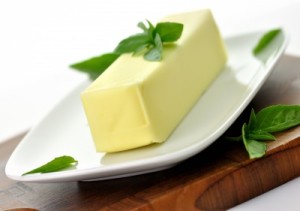 “BPA-free” is an important label you probably notice quite a bit. I hope you are heeding the warning and choosing BPA-free products if you use plastics, because BPAs and another “everywhere chemical”—phthalates—do nasty things to humans.
“BPA-free” is an important label you probably notice quite a bit. I hope you are heeding the warning and choosing BPA-free products if you use plastics, because BPAs and another “everywhere chemical”—phthalates—do nasty things to humans.
These rather toxic chemicals are quite literally found everywhere. BPA is used in hard, clear plastic products, like baby bottles and some food storage containers. It’s fairly easy to look for the warning labels to avoid exposure to BPA. But phthalates, used in plastics that need to be flexible, like pacifiers and plastic wrap, don’t necessarily come with a warning — and research has linked them to cancer and other serious health problems.
In the past, one particular phthalate, called di-2-ethylhexylphlatate (DEHP) was banned because of concerns over its potential carcinogenic effects as well as its harm to fertility. But research into compounds being used in plastic as supposedly safer, “less toxic” substitutes, are now showing that the new phthalates are just as problematic for your health. They can increase your blood pressure and make you more vulnerable to developing diabetes.
Steps to avoiding toxins in your food
This presents a big problem for you and me because these toxins are in a lot of the products we use every day — including plastic containers and plastic wrap we use to hold and store our food. And according to the Environmental Protection Agency (EPA), they are leaching right into your leftovers and into the foods you bring home from the store in plastic packaging.
Those kinds of facts can be confusing. You can’t expect to be an expert on plastics and it can be a daunting task understanding which plastics found in stores have the worst effects.
But there are some uncomplicated solutions: An easy way to cut down exposure is to simply eat fresh fruits and vegetables that have not been wrapped in plastic or packaged in cans lined with plastic.
But don’t stop there. Follow these tips to further limit your toxic exposure:
- When storing foods in the refrigerator, wrap them in wax paper or aluminum foil instead of plastic. Alternatively, you can store them in glass, porcelain or stainless steel containers.
- Don’t microwave foods in plastic containers. Transfer them to glass or ceramic. Otherwise the high heat in the microwave can cause phthalates from the plastic to enter your food.
- Wash plastic food containers by hand. Don’t clean them in the dishwasher. The high heat and detergents used in dishwashers can leach plasticizers out of the containers.
- When possible, avoid using plastic containers which have the recycle numbers 3, 6 or 7 on the bottom. Those numbers indicate the plastic contains phthalates.
Ridding the rest of your home – and your body of toxins
To limit your exposure to phthalates outside of the kitchen:
- Keep vinyl toys away from children
- Choose fragrance-free personal care products when possible
In today’s chemical world, some degree of exposure to toxins like phthalates is just about inevitable. These tips can help you going forward, but what about the levels you’ve been exposed to already? For that, you may want to consider detoxing. And whatever you do, avoid the plastic.
Remember, Tupperware is a brand, not a material. It’s plastic.
Stay Informed, Stay Healthy.



